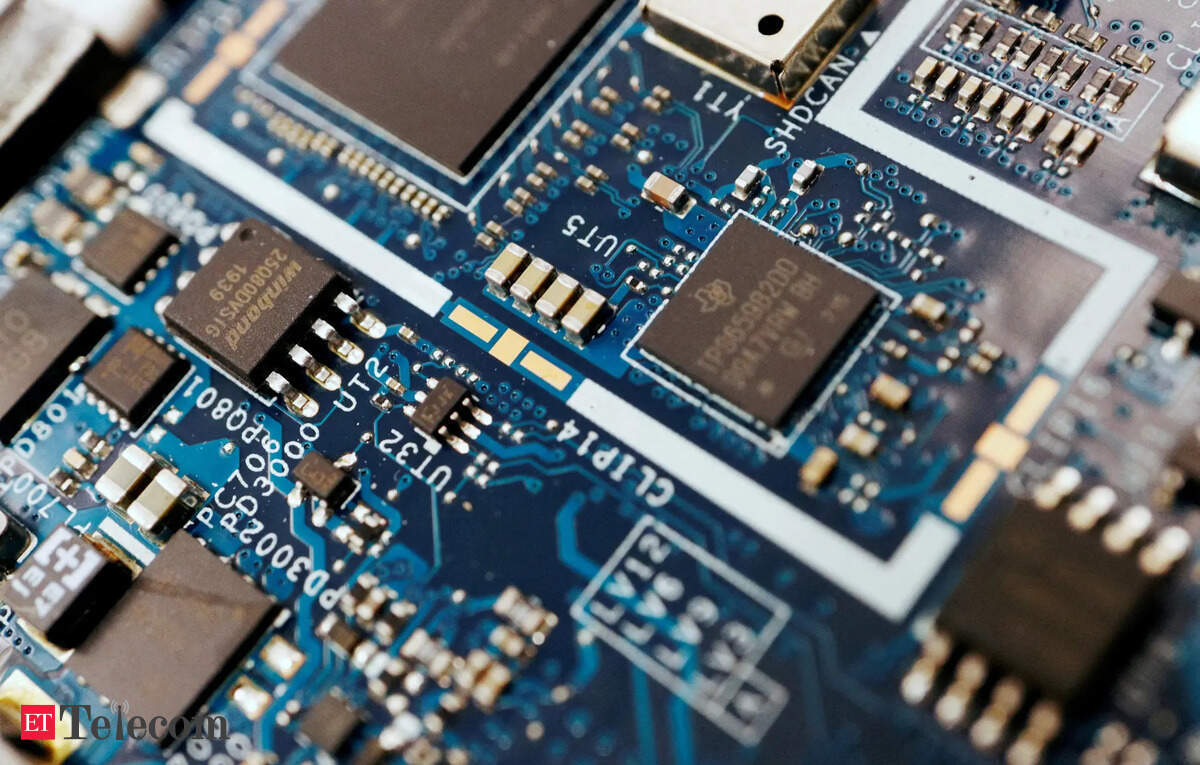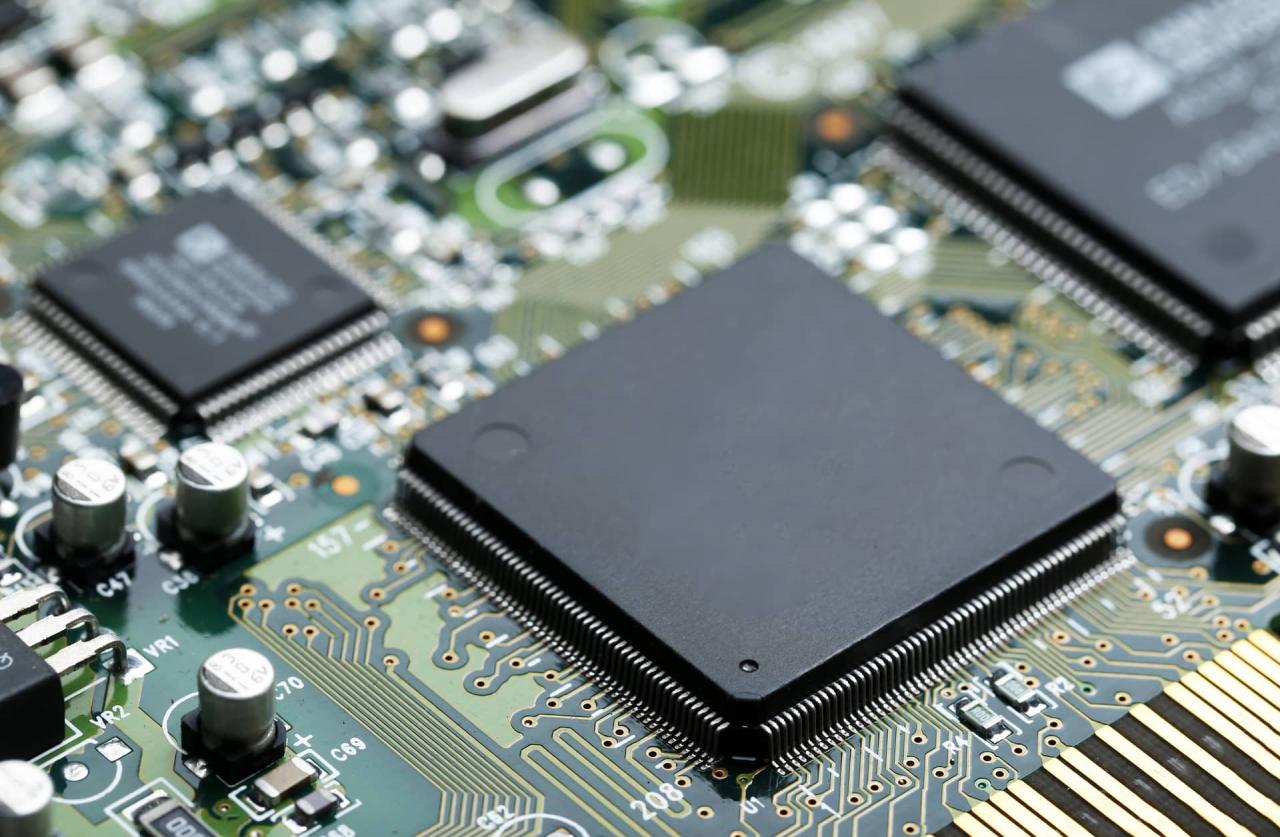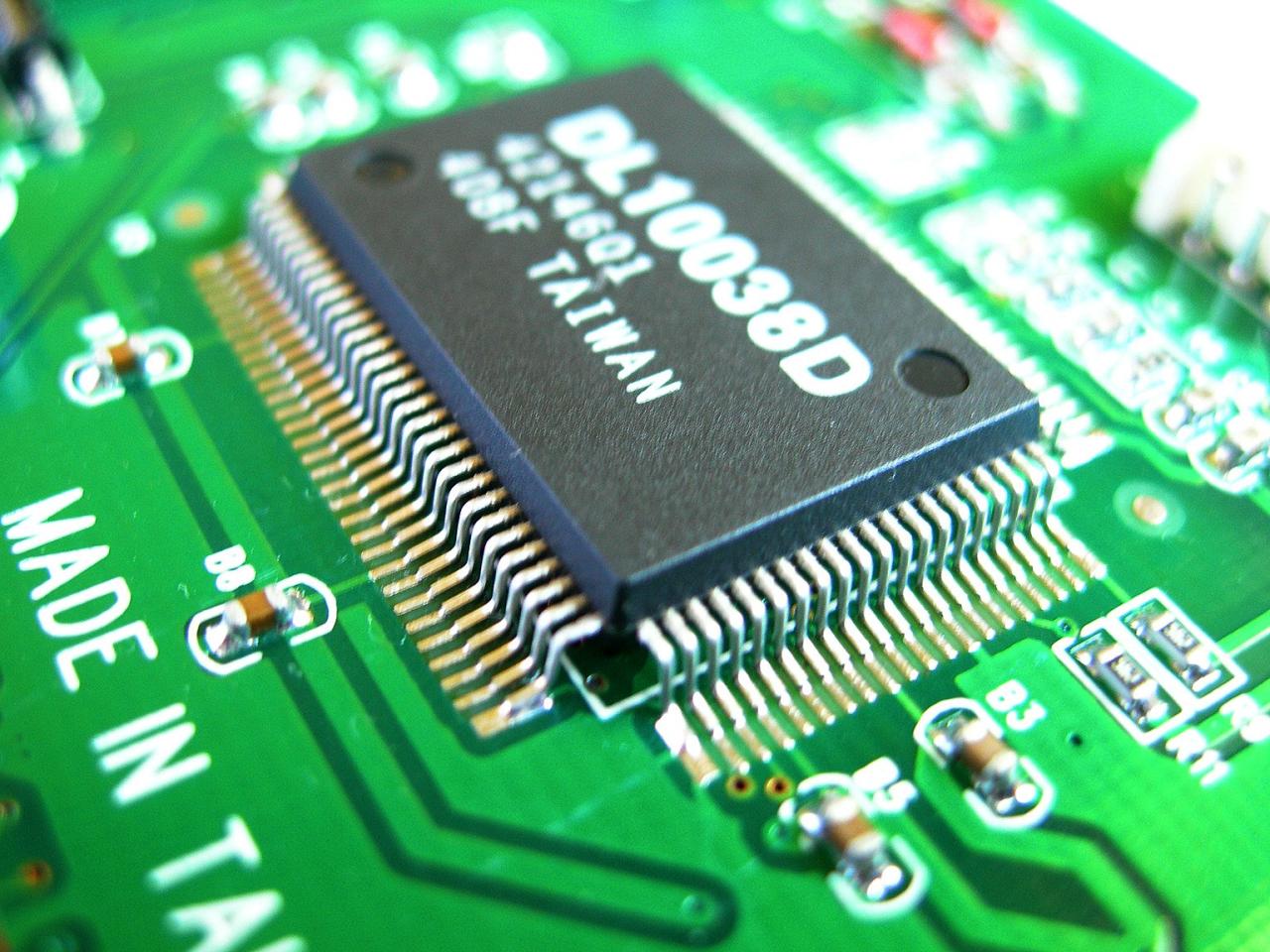Chip iPhone stands at the forefront of mobile technology, playing a pivotal role in the seamless experience that users have come to expect from Apple devices. With each new generation of chips, iPhones have witnessed remarkable enhancements in performance, efficiency, and security, making them a step ahead of the competition. The evolution of chip technology not only sharpens the device’s capabilities but also significantly impacts battery life, ensuring that users can enjoy longer usage times without compromising on power.
By delving into the intricate details of iPhone chip technology, we uncover the manufacturing processes that create these cutting-edge components, the materials involved, and the leading figures behind their production. Additionally, a comparative analysis with competitor chips reveals the unique advantages of Apple’s A-series chips, contributing to both performance and security. As we look toward the future, the anticipated advancements in chip technology promise even greater integration of AI and innovative functionalities that will redefine what users can expect from their iPhones.
Chip Technology in iPhones
The evolution of chip technology in iPhones has been a cornerstone in Apple’s pursuit of performance, efficiency, and innovation. From the early A-series chips to the latest iterations, each generation has brought significant advancements that not only enhance the user experience but also redefine what a smartphone can achieve. This discussion delves into the transformative role of chip technology in iPhones, focusing on performance upgrades, generational differences, and implications for battery life.
Role of Chip Technology in Enhancing iPhone Performance
Chip technology is integral to the iPhone’s functionality, determining its processing power, graphics capabilities, and machine learning performance. The A-series chips are designed to optimize various tasks, ensuring smooth multitasking and fast app launches. For example, the introduction of the A15 Bionic chip not only provided a considerable boost in CPU and GPU performance but also integrated a 16-core Neural Engine, enabling advanced machine learning tasks directly on the device.
This advancement allows for real-time photo processing, enhanced augmented reality experiences, and improved gaming graphics, setting the iPhone apart from competitors. According to Apple, the A15 Bionic chip delivers up to 50% faster CPU performance than the leading smartphone chip, showcasing the significant leap in processing capabilities.
Differences Between Various iPhone Chip Generations
The progression of iPhone chip technology displays distinct advancements across generations, each with unique features that enhance performance and functionality.
Key differences include:
- A11 Bionic: Introduced in iPhone 8 and iPhone X, this chip featured a six-core CPU and was the first to include a dedicated neural engine for machine learning tasks.
- A12 Bionic: Debuting in iPhone XS and XR, the A12 offered an improved 7nm architecture, resulting in higher efficiency and performance gains, especially in gaming and AR applications.
- A13 Bionic: Found in iPhone 11 models, it emphasized performance efficiency, achieving better battery life while enhancing machine learning capabilities with an even faster Neural Engine.
- A14 Bionic: The first chip built on a 5nm process, this chip brought significant improvements in CPU and GPU performance while reducing energy consumption, marking a milestone in mobile processing power.
- A15 Bionic: Featured in the iPhone 13 series, it ensured even higher performance metrics with enhanced graphics capabilities and improved energy efficiency, catering to the demands of high-performance apps and games.
These advancements reflect Apple’s philosophy of consistent innovation, ensuring each new chip generation not only meets but exceeds user expectations.
Implications of Chip Technology on Battery Life and Efficiency
The design and architecture of iPhone chip technology have profound implications for battery life and overall efficiency. Each successive chip generation has increasingly focused on energy efficiency, allowing for prolonged usage without compromising performance.
For instance, the transition from the A13 to the A14 Bionic introduced a 15% improvement in CPU efficiency, enabling users to experience more extended battery life even during intensive tasks. The A15 chip further optimized power consumption by integrating advanced power management techniques, which in turn reduces heat generation and enhances device longevity.
Apple’s focus on energy-efficient chips is evident in their claims that newer models can support video playback for up to 28 hours, significantly more than previous generations, demonstrating the critical relationship between chip technology and battery performance.
“With each new chip generation, we not only enhance performance but also pioneer new standards for efficiency and battery life, ensuring users can do more for longer.” – Apple
Manufacturing Process of iPhone Chips: Chip Iphone

The manufacturing process of iPhone chips is an intricate and highly specialized operation that combines advanced technology with precision engineering. The process includes several stages, from design to fabrication, ensuring that each chip meets the stringent performance and efficiency requirements set by Apple. The importance of this manufacturing process cannot be overstated, as it forms the backbone of iPhone functionality and user experience.
The creation of iPhone chips begins with the design phase, where chip architects and engineers develop blueprints using sophisticated software. Once the design is finalized, the fabrication process commences in semiconductor foundries, which utilize cutting-edge techniques such as photolithography and chemical etching. These methods allow for the etching of millions of transistors onto a silicon wafer, creating the complex circuitry that powers the iPhone.
Materials Used in iPhone Chip Production, Chip iphone
The manufacturing of iPhone chips involves a variety of materials, each selected for its specific properties and performance capabilities. Understanding these materials is crucial for appreciating the intricacies of chip production.
Silicon is the primary material used in chip fabrication due to its semiconductor properties. However, several other materials are equally important:
- Silicon Dioxide: Used as an insulator and in the creation of various layers within the chip.
- Gallium Arsenide: Utilized in high-frequency applications, offering superior electron mobility compared to silicon.
- Metals (such as Copper and Aluminum): Employed for interconnects, allowing electrical signals to travel between different parts of the chip.
- Dielectrics: Materials like hafnium oxide are used to create capacitors and other components that enhance the chip’s performance.
By employing these materials, manufacturers can produce chips that are not only powerful but also energy-efficient, optimizing the overall performance of the iPhone.
Key Players in the iPhone Chip Manufacturing Industry
The iPhone chip manufacturing landscape is dominated by several key players, each contributing to the development and production of these essential components. Their roles vary from design to fabrication and assembly, creating a complex ecosystem that supports Apple’s technological advancements.
The primary entities include:
- Apple Inc.: While primarily known for its consumer products, Apple designs its custom chips, such as the A-series and M-series, in-house.
- TSMC (Taiwan Semiconductor Manufacturing Company): The world’s largest semiconductor foundry, TSMC is responsible for fabricating Apple’s chip designs using advanced process nodes.
- Samsung Electronics: A supplier of memory chips and, at times, a foundry partner for Apple, Samsung plays a significant role in the supply chain.
- Intel and Qualcomm: These companies, while not directly involved in iPhone chip production, influence the industry with their own technologies and innovations.
The collaboration and competition among these key players drive innovation and advancements in chip technology, ultimately benefiting consumers through improved device capabilities.
Comparison of iPhone Chips with Competitors

The competition in the smartphone chipset market is fierce, with Apple’s A-series chips and Qualcomm’s Snapdragon chips leading the charge. Apple’s chips have consistently demonstrated superior performance in terms of speed and efficiency. This section explores how these chips stack up against each other, the implications of proprietary chip technology, and the role of iPhone chips in device security.
Performance Comparison of A-series Chips and Snapdragon Chips
Apple’s A-series chips have redefined mobile performance standards, particularly with the introduction of the A15 and A16 Bionic chips. These chips utilize a 5nm manufacturing process, allowing for more transistors and less power consumption compared to their Qualcomm counterparts, such as the Snapdragon 888 and 8 Gen 1.
Consider the following aspects when comparing their performance:
- CPU Performance: Apple’s A-series chips often outperform Snapdragon chips in CPU benchmarks. For instance, the A15 Bionic has been reported to have a single-core score ranging above 1700, while the Snapdragon 888 achieves scores near 1100.
- GPU Capabilities: The A-series chips also lead in graphics performance, with the A15 featuring a 4 or 5-core GPU, providing superior gaming experiences and graphic rendering compared to the Adreno GPU in Snapdragon chips.
- Machine Learning: Apple’s chips incorporate a dedicated Neural Engine that enhances machine learning capabilities, which is often more efficient than the AI engines in Snapdragon processors.
Advantages and Disadvantages of Proprietary Chips
The use of proprietary chips, such as Apple’s A-series, presents both advantages and disadvantages for smartphone manufacturers and consumers.
- Advantages:
- Optimization: Proprietary chips allow for tighter integration with the device’s software, enhancing overall performance and user experience.
- Efficiency: Custom-designed chips can lead to better battery optimization, as seen in the A-series’s ability to deliver high performance with lower power consumption.
- Disadvantages:
- Limited Compatibility: Proprietary chips can restrict hardware compatibility and limit choices for consumers compared to more universally compatible Snapdragon chips.
- R&D Costs: The development of proprietary chips is costly and time-consuming, which can impact overall pricing of devices.
Contribution of iPhone Chips to Device Security
Apple has prioritized security in its chip design, making A-series chips integral to the overall security architecture of iPhones. The following points highlight how these chips enhance device security compared to competitors:
- Secure Enclave: Each A-series chip includes a Secure Enclave for biometric data processing, ensuring that Face ID and Touch ID data are stored securely and never leave the chip.
- Hardware-Based Encryption: A-series chips provide hardware-level encryption, protecting user data at rest and ensuring secure communications.
- Frequent Updates: Apple’s control over both hardware and software allows for timely security updates that are critical for safeguarding against vulnerabilities, making iPhones less susceptible to attacks.
Future Trends in iPhone Chip Development

As technology continues to evolve, the future of iPhone chip development promises to be dynamic and innovative. Anticipated advancements in chip technology will not only enhance performance but also support new functionalities that align with consumer expectations and emerging trends. With Apple’s commitment to maintaining its leadership in the smartphone industry, the trajectory of chip design is set to undergo significant transformations.
Advancements in chip technology for future iPhone models are expected to focus on increased processing power, improved energy efficiency, and enhanced integration of artificial intelligence capabilities. The next generation of chips may utilize advanced manufacturing techniques, such as 3nm process technology, which allows for more transistors in a smaller chip area. This shrinkage not only boosts performance but also reduces power consumption, leading to longer battery life and more efficient thermal management.
AI Integration in Upcoming iPhone Chips
The integration of artificial intelligence (AI) into iPhone chips is anticipated to reshape the user experience significantly. AI capabilities are becoming increasingly important in smartphone operation, allowing devices to process data and learn user behavior more efficiently. This section discusses how AI might influence upcoming iPhone chip designs.
– On-device Processing: With a focus on privacy and speed, future iPhone chips may incorporate more on-device AI processing capabilities. This reduces reliance on cloud services, ensuring faster response times and improved privacy for users. For example, features like real-time language translation or advanced photo recognition can be processed locally, enhancing user experience without compromising security.
– Neural Processing Units (NPUs): Upcoming iPhone models may feature upgraded NPUs, designed specifically to handle AI tasks. These units can process complex algorithms more efficiently, enabling features such as enhanced computational photography, improved voice recognition, and more accurate predictive text input. The latest iPhone models already show significant improvements in camera performance utilizing NPU capabilities, and future iterations will likely expand on this foundation.
– Energy Management: AI could also play a crucial role in energy management within future iPhone chips. Intelligent algorithms could optimize battery usage based on user habits, potentially extending battery life significantly. For instance, if the device learns that a user frequently accesses certain apps at specific times, it could pre-load these applications, thus reducing lag and energy expenditure.
Emerging Technologies Impacting iPhone Chip Functions
Emerging technologies such as 5G connectivity, augmented reality (AR), and the Internet of Things (IoT) are set to influence iPhone chip functions profoundly. These advancements present opportunities for Apple to enhance the capabilities of its future chips.
– 5G Connectivity: As 5G networks continue to roll out globally, iPhone chips will need to support higher data throughput and lower latency. This may lead to the development of more sophisticated modem technology integrated directly into the chip, thus improving performance in data-heavy applications like streaming, gaming, and video conferencing. The need for efficient power management in 5G operations will also be a key consideration in chip design.
– Augmented Reality: With Apple’s growing interest in AR technologies, future chips are likely to enhance AR experiences by providing better processing power and graphics capabilities. This could involve integrating dedicated graphics processing units (GPUs) or enhancing existing architectures to manage AR applications seamlessly. Enhanced AR functionalities could transform how users interact with their environment, making applications in gaming, navigation, and education more immersive.
– IoT Integration: As IoT devices become more prevalent, future iPhone chips might include functionalities that enable better communication with an array of smart home devices. This integration could allow for seamless control and monitoring of connected devices directly from the iPhone, creating a more cohesive ecosystem. Future chips may need to incorporate low-power protocols to ensure that battery life is not compromised while maintaining constant connectivity with IoT devices.
“The future of iPhone chips is not just about performance; it’s about reimagining the interaction between technology and users through smarter, more integrated solutions.”
Questions and Answers
What is the main function of the chip in an iPhone?
The chip in an iPhone is responsible for processing data, managing tasks, and enhancing overall device performance, including graphics, AI capabilities, and battery efficiency.
How often does Apple release new iPhone chips?
Apple typically releases new iPhone chips annually, coinciding with the launch of new iPhone models, showcasing advancements in technology and performance.
What materials are used in the manufacturing of iPhone chips?
iPhone chips are primarily made from silicon and other high-quality materials that support efficient power management and performance, including metals for connections and insulation.
How do iPhone chips enhance battery life?
iPhone chips are designed for efficiency, optimizing power consumption and performance, which helps extend battery life during daily use.
What security features are built into iPhone chips?
iPhone chips include hardware-based security features, such as Secure Enclave, which protects sensitive data and enables secure transactions, enhancing overall device security.
The Samsung Galaxy Note10 stands out with its premium design and powerful performance, making it an excellent choice for productivity enthusiasts. With features like the S Pen and a stunning display, this smartphone caters to both creative and professional needs, ensuring that users can accomplish tasks efficiently on the go.
If you’re looking for budget-friendly options without sacrificing quality, the Samsung Galaxy F series deserves attention. Tailored for those who want a reliable smartphone experience, the Galaxy F models combine decent specifications with an attractive price point, making them ideal for students and young professionals alike.